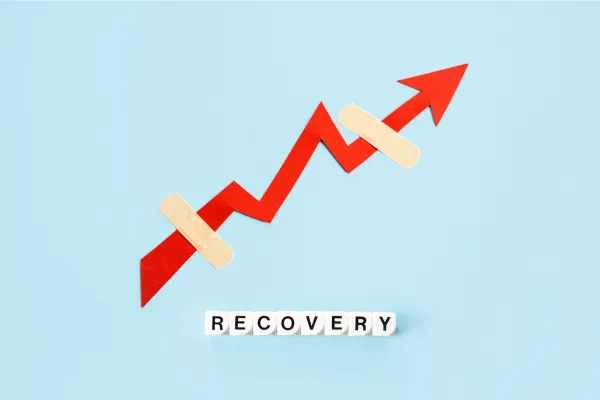More than training. It's an Edge.

The S.H.I.T. Recovery Framework: How to Make Smarter Recovery Decisions for Better Performance
Introduction:
Every athlete knows the importance of pushing hard during training, but what about the recovery phase? Training isn’t just about doing more; it’s about training smarter, and recovery plays a key role in that. Recovery helps your body repair, grow stronger, and perform at its peak.
But here’s the challenge: how do you know when to push through and when to ease off based on how you’re feeling? That’s where the S.H.I.T. Recovery Framework comes in. This simple, yet effective, decision tree helps you assess your recovery choices on a day-to-day basis—especially when you’re in-season and competing.
The goal? To guide you through recovery decisions in real-time, helping you decide whether to rest, adjust your training, or push forward. Let’s break down how to use this framework to recover smarter and perform better.
What is the S.H.I.T. Recovery Framework?
The S.H.I.T. Recovery Framework stands for:
Stiff
Heavy
Irritable
Tired
These four symptoms are indicators of how your body is recovering. Depending on how you’re feeling, the framework helps you make decisions about how to approach your recovery and training for the day. This is a high-level guide meant for athletes during the competitive season, not during pre-season or base-building phases.
Step 1: Morning Check-In – How Do You Feel?
Before you jump into your day, take a few moments to check in with yourself:
What are my current goals?
(Are you focused on performance today or just maintaining?)What do I need to recover from?
(Did you have a tough session yesterday, or are you feeling the effects of earlier training?)When do I need to recover by?
(Do you have a competition or a key training session coming up?)How do I feel right now?
(Are you stiff, heavy, irritable, or tired?)
These considerations will give you the insight you need to decide on your recovery strategy for the day.
Step 2: Recovery Tools and Strategies
Now that we know when to adjust training, let’s talk about the tools and strategies you can use when you’re feeling stiff, heavy, irritable, or tired. Here’s a summary of the most effective recovery options based on how you’re feeling:
Stiff (Unable to move freely)
Recovery Options: Movement exercises, mobility drills, light stretching, contrast baths (alternating hot and cold), or warm baths.
These can help alleviate stiffness and improve your range of motion.
Heavy (Heavy legs, fatigue)
Recovery Options: Focus on protein and carbohydrate intake for muscle repair, and use cold water immersion (CWI), compression garments, or blood flow restriction (BFR) to help manage fatigue and promote recovery.
Irritable (Poor mood, distracted, frustrated)
Recovery Options:
Engage in mindfulness, meditation, yoga, or consider a sauna session to reset your mood.
Review your previous night's sleep—if needed, consider a nap or an earlier bedtime to catch up on quality rest.
Tired (Sleepy, poor focus, unmotivated)
Recovery Options:
Same sleep strategies as Irritable, stay hydrated, adjust carbohydrate intake, and consider caffeine to boost energy levels if necessary.
Step 3: Apply the S.H.I.T. Framework to Make Smarter Recovery Decisions
1. Feeling 2 of These Symptoms? (Stiff, Heavy, Irritable, Tired)
Recommendation: Consider a mix of recovery strategies from the S.H.I.T. categories.
2. Feeling 3 of These Symptoms? (Stiff, Heavy, Irritable, Tired)
Recommendation: Adjust training and stimulus for the day.
If you feel three of these symptoms, your body may need more recovery time.
Reduce training intensity and focus on a lower-stress session (e.g., technique work, mobility drills, or low-intensity activity) to allow your body to recover without overloading it.
3. Feeling Like S.H.I.T. (Stiff, Heavy, Irritable, Tired)?
Recommendation: Reduce training and stimulus.
If you're experiencing all four symptoms—stiff, heavy, irritable, and tired—it's a clear sign that your body needs rest.
Prioritise recovery today. You might need a full recovery day, with complete rest or low-intensity activities to allow your body the time it needs to recover fully.
Step 4: Coaches, Use This Framework to Support Your Athletes
The S.H.I.T. Recovery Framework isn’t just for athletes—coaches can use it too! It helps coaches understand when athletes might need to adjust their training and provides a quick way to guide them through effective recovery strategies.
Use the framework as a daily check-in tool to support athletes in making recovery decisions.
Help them interpret their symptoms and recommend the appropriate action to optimise performance and avoid overtraining.
Final Thoughts: Recovery is Just as Important as Training
Recovery is a vital component of high-performance training. It’s not just about resting; it’s about making smart decisions that ensure you’re ready to train and compete at your best. The S.H.I.T. Recovery Framework, developed by Dr. Peter Tierney, helps you make those decisions, guiding you to train smarter, not harder.
By using this framework, you’ll know when to adjust your training, when to push through, and when to prioritise recovery. Remember, recovery isn’t one-size-fits-all—it’s about listening to your body, and making the choices that support your long-term success.
STAY CONNECTED
QUICK LINKS
GYM HEADQUARTERS
© Athlete’s Edge Albury – All Rights Reserved